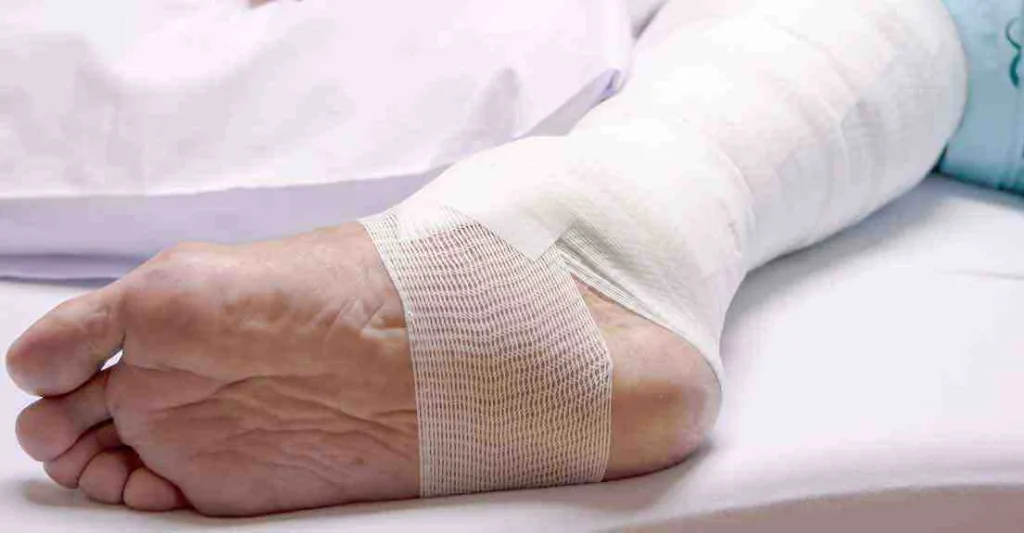Pressure ulcer or injury prevention remains one of the most common and significant tasks in healthcare for decreasing harm.
Ethically, we want to do no harm. We not only don't want to cause harm, but we also want to avoid harm by preventing conditions like pressure ulcers in the first place. Benjamin Franklin's adage, "An ounce of prevention is worth a pound of cure," resonates in the healthcare community where we see the outcomes of preventable and unpreventable injuries. We would much rather prevent injury than watch a patient live through preventable pain, wounds or diagnoses. A paradigm shift is in progress toward education efforts in communities to help people maintain or achieve healthy lifestyles so preventable conditions are avoided. However, in acute, subacute and chronic environments, we care for patients/clients who have one or many healthcare conditions that put them at risk for injury - skin injury in particular.
How you can help prevent pressure ulcers
Is there a way we can involve healthcare teams through interprofessional education and discipline-specific prevention interventions to combat skin and pressure injuries? Yes! In 2016, the National Pressure Ulcer Advisory Panel described a change in terminology. The NPUAP staging system now refers to pressure ulcers as "pressure injuries." The change should help healthcare professionals think of injuries and potential for injury in terms of harm to tissue from pressure regardless of whether the harm has resulted in open injury or nonintact skin. There can be underlying serious tissue injury before the injury progresses to the point of an ulcer or nonintact skin. Have you ever heard a colleague say, "It's just a stage 1 pressure injury." or "If it blanches, it's OK." Well, is it really OK? Implementing prevention measures may help keep these areas of pressure stress or injury from becoming worse.
Practicing prevention also can reduce costs
Being prevention-minded can help save money too. Medicare has penalized hospitals with regard to preventable injuries or complications such as pressure injuries as reported in the article "769 hospitals face Medicare penalties due to patient injuries" in Healthcare IT News. Penalties for hospitals for preventable complications may be upward of $400 million. In addition, pressure ulcers are a frequent topic for litigation, more so than even falls, according to the Agency for Healthcare Research and Quality. A past estimate states that a pressure ulcer can add tens of thousands of dollars in costs to a hospital admission. There are things we can do to help decrease healthcare injuries. "A number of innovations have been published offering practicing nurses and managers ideas for raising awareness of skin care and preventing pressure ulcers," states a research article published by the National Institutes of Health. "The majority of these have focused on patients in hospital settings with very little in the literature related to care-home and community initiatives." Despite available literature, pressure injuries are still a significant issue, and risk for pressure injury increases in persons with compromised mobility and/or nutrition, according to the NIH article "Pressure ulcer prevention is everyone's business: the PUPS project." Nurse.com by OnCourse Learning has developed a one-hour interprofessional webinar, "It's Just a Stage 1 Pressure Injury. Or Is It?" The webinar discusses deep tissue injuries, stage 1 pressure injuries, assessment tips for darker skin tones (where initial tissue changes may be harder to recognize), risk assessment and, of course, prevention efforts. In addition, nurses, nursing assistants, physical therapists, dietitians, pharmacists and occupational therapists can earn continuing education credit through this educational activity.
Courses related to 'pressure ulcers'
WEB338: It's Just a Stage 1 Pressure Injury. Or is it? (1 contact hr) Under pressure: just a blanchable event or an underlying injury? It can be much more difficult to distinguish a deeper tissue injury from a stage 1 injury when assessing darker skin tones versus very light skin tones. The National Pressure Ulcer Advisory Panel modified descriptive language from pressure ulcer to pressure injury in 2016. Since skin can look very different based on an individual's skin tone, it's important to fortify assessment skills with tips you can use to help prevent "missed" deeper injuries. CE743: Diabetic Foot Ulcers Remain a Primary Healthcare Concern (1 contact hr) Despite recent improvements in patient access to medical care in the U.S., diabetic foot ulcers continue to be a prevalent health problem. Interprofessional approaches used to manage other diseases have also been shown to help prevent the occurrence of diabetic ulcers. In addition, understanding the pathophysiology of diabetic ulcers to enhance screening and prevention skills, appreciation of the principles of offloading, optimal wound care and adjunct therapies may all contribute to prevention and healing of the vast majority of diabetic foot ulcers. Thus, education of both primary care providers and patients remains of paramount importance. CE541: Perioperative Nurses Lead the Way in Managing Surgical Patients' Skin Integrity (1 contact hr) Pressure injury affects the more than 2.5 million hospitalized patients each year in the U.S. Studies have shown that patients who develop pressure ulcers have an increased rate of mortality. The people most affected are older adults and people with a major injury or comorbid disease. In the OR, management of a patient's skin integrity is a challenge. Anesthetized patients cannot adjust their position in response to physiological discomfort and lack of sensation. The state of anesthesia (general, local, block, or sedation) and anesthetic agents may compromise physiological response to ischemic tissue under pressure. Pressure injury may not be noticed until up to four days postop, and it may appear as a reddish-maroon or purple area by floor personnel. In the OR, the injured area may look reddish, which is caused by reperfusion after prolonged ischemia. This module will provide nurses with evidence-based practice changes that will promote their management of skin integrity in the OR.






